
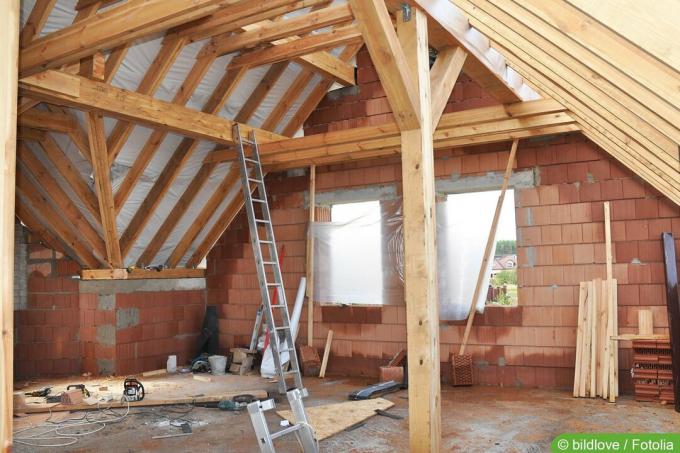
Table of contents
- Materials for attic insulation
- PIR and PUR rigid foam boards
- XPS insulation boards
- rockwool
- panels for floor construction
- screed elements
- OSB panels
- attic elements
In order to insulate the attic so that it can be walked on immediately, there are a number of materials to choose from. The advantages and disadvantages as well as the estimated costs of immediately accessible attic insulation are clearly summarized in this article.
Materials for attic insulation
There are several materials that can be used to insulate an attic:
PIR and PUR rigid foam boards
Rigid foam panels made of synthetic plastic are available in different degrees of hardness and offer good insulating properties. A distinction is made here between plates made of PIR (polyisocyanurate) and PUR (polyurethane). The differences here are higher fire resistance for PIR and better elasticity for PUR.
Advantages
- Low insulation thickness required due to good insulation properties
- low weight
- good weather resistance
- water repellent
- easy processing
- cheap material price
Disadvantages
- Release of toxic gases in case of fire
- not sustainable due to fossil raw material
- high energy consumption during production
areas of application
- Insulation for roofs (including flat roofs) and basements of private buildings
- Façade insulation for lightweight buildings
- Due to higher elasticity, PUR panels can be adapted very individually
- PIR is also suitable for public buildings due to better fire-retardant properties
End User Prices
Depending on the insulation thickness, rigid foam panels made of PIR and PUR cost between EUR 10/m² and EUR 20/m². This makes them one of the cheaper materials for attic insulation that can be walked on immediately.
To insulate an attic with an area of 50 m² and an assumed waste of 6%, you need 53 m² of insulation boards. At a price per square meter of EUR 15, the material costs for the hard foam panels are EUR 795.
XPS insulation boards
Insulation panels made of extruded polystyrene (XPS) offer extremely robust and durable insulation. This type of rigid foam board has very good insulation values and can even be used in wet areas such as e.g. B. for basements or on floor slabs. As with most petroleum-based insulating materials, the fire protection properties are not particularly positive. XPS is a comparatively expensive insulating material.
Advantages
- Versatile
- excellent insulating properties
- very durable and pressure resistant
- no moisture absorption
- very durable
Disadvantages
- Not good fire protection properties
- Smoke development in case of fire
- not sustainable due to fossil raw material
- higher material price
areas of application
- Perimeter insulation for basement walls (external installation) and base areas
- Insulate facades
- Insulating floor slabs (even in groundwater)
- Insulation for roofs, ceilings and floors
End User Prices
The price per square meter for XPS rigid foam panels is between EUR 5 and EUR 30. An attic with an area of 50 m² to be insulated requires 53 m² of insulation material with 6% waste. Based on a price per square meter of EUR 17.50, the costs for the XPS panels are EUR 927.50.
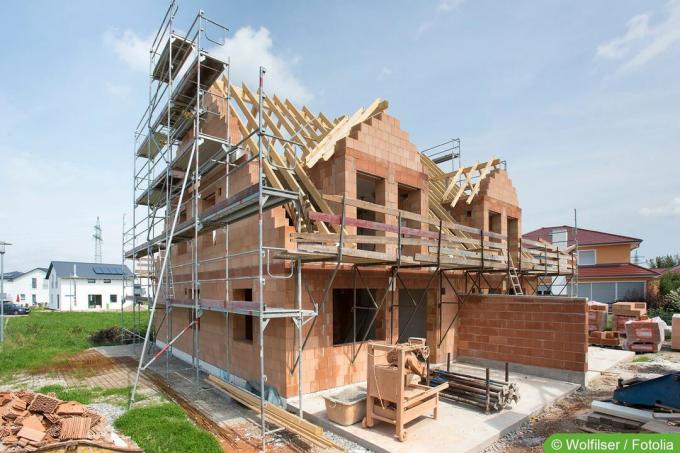
rockwool
Stone wool is a widespread mineral-synthetic insulating material with very good insulating properties. It offers a high level of fire protection and is quite cheap compared to other types of insulation. Stone wool insulation is available in the form of mats or panels. It is important that stone wool is only used in dry areas, as the insulating effect deteriorates drastically when it absorbs moisture.
Advantages
- Very good insulation performance
- easy to process
- non-flammable
- permeable
- relatively cheap
Disadvantages
- Moisture absorption reduces insulation performance
- high energy consumption during production
areas of application
- Insulation of roofs, ceilings and walls indoors
End User Prices
Depending on the thickness of the material, a square meter of stone wool costs between EUR 5 and EUR 20. With 6% waste and an attic area of 50 m², 53 m² of stone wool should be purchased. This causes costs of EUR 662.5 if you calculate with a price of EUR 12.50/m².
panels for floor construction
The insulating materials described must be covered with panels as part of the floor construction for the attic in order to make them walkable. OSB panels or screed elements, for example, are well suited here.
screed elements
Gypsum fiber boards, also known as screed elements or Fermacell (manufacturer name), are popular in dry construction. Due to their low weight, they are well suited for floor construction in attics, since wooden beam ceilings are often installed here.
Advantages
- Easy to relocate
- small construction height
- light weight
- non-flammable
- cheap material
Disadvantages
- Moisture sensitive
- limited resilience
- when used alone, very low insulation performance
areas of application
- Drywall (walls, ceilings and floors) indoors
End User Prices
Gypsum fiber boards with the usual thickness of 20 mm cost approx. 17 EUR per square meter. With a floor area of 50 m² to be laid and 6% waste, 53 m² of gypsum fiber boards are required, which cost a total of EUR 901 at EUR 17/m².
OSB panels

So-called chipboard panels Oriented Strand Board -> OSB) offer a very hard-wearing floor covering. They already have certain insulating properties without an extra insulating layer. For really effective attic insulation, however, OSB panels should also be used over an insulating material.
Advantages
- Pretty tough
- own insulating effect
- Depending on the design, good fire protection
Disadvantages
- High own weight
- complex to process (cutting)
- relative expensive
areas of application
- Drywall inside (walls and floors)
- Depending on the classification, it is also conditionally suitable for wet areas
End User Prices
Good quality OSB panels with a thickness of 22 mm cost approx. 20 EUR per square meter. If a 50 m² attic is to be laid out with OSB panels, 53 m² of material are required, since a waste of 6% is planned. At 20 EUR/m², 1060 EUR must be estimated for this.
To insulate an attic with an area of 50 m² and an assumed waste of 6%, you need 53 m² of insulation boards. At a price per square meter of EUR 15, the material costs for the insulation material are EUR 795.
attic elements
Laying floorboards over underlying insulation is still a common way to get ready-to-walk attic insulation. Nowadays so-called attic elements offer a clever alternative.
These are OSB, wood fiber or gypsum fiber boards with an insulating layer made of synthetic or mineral materials already attached to the underside. These panels can be laid directly, so that the insulation and the floor structure can be carried out in one operation.
Advantages
- Available in numerous variants
- Insulation and paneling in one operation
- since insulation and paneling are combined in one product, relatively inexpensive for the attic conversion
Disadvantages
- Challenging cutting due to material combination
areas of application
- Loft conversion
End User Prices
- Gypsum fiber board 30 mm thick with wood fiber insulation layer approx. 22 EUR/m²
- Gypsum fiber board 35 mm thick with rock wool approx. 24 EUR/m²
- Gypsum fiber board 50 mm thick with polystyrene hard foam insulation layer approx. 23 EUR/m²
With a waste of 6% and an area of 50 m² to be laid, 53 m² of attic elements have to be purchased. A square meter price of EUR 23 results in material costs of EUR 1219. These costs already include insulation and planking, which is why this type of immediately accessible attic insulation is not only very practical, but also inexpensive.
 Home editorial office
Home editorial office
Learn more about roof / attic
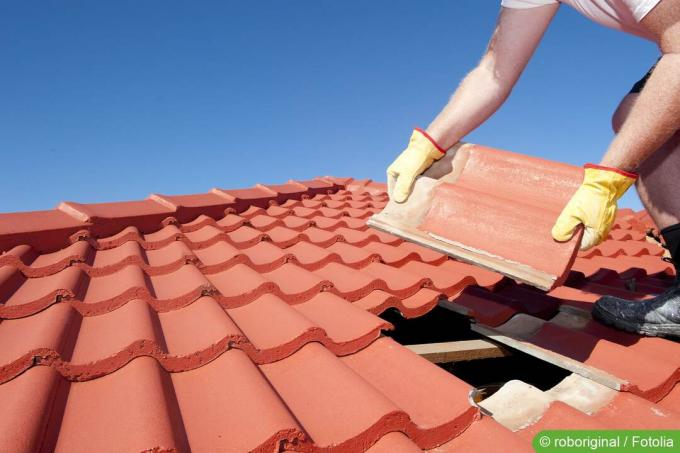
Snow blows under roof tiles: what to do?
Snow drifts often get under the roof tiles when blizzards or strong winds blow them underneath. The moisture often causes damage from meltwater. Air spaces between the roof tiles are to blame. Homeowners should now find out how to counteract this.
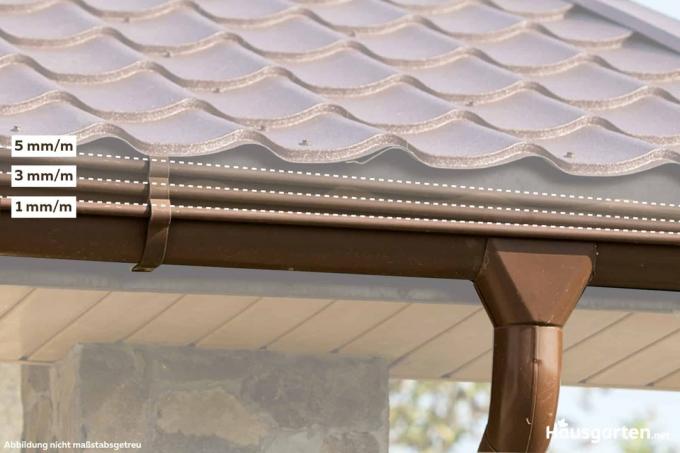
Gutter slope: the ideal gradient
For a gutter to function properly, a slope that has an ideal inclination is required. Various factors have to be taken into account. Before installation, you should find out how the gradient is to be calculated and implemented.
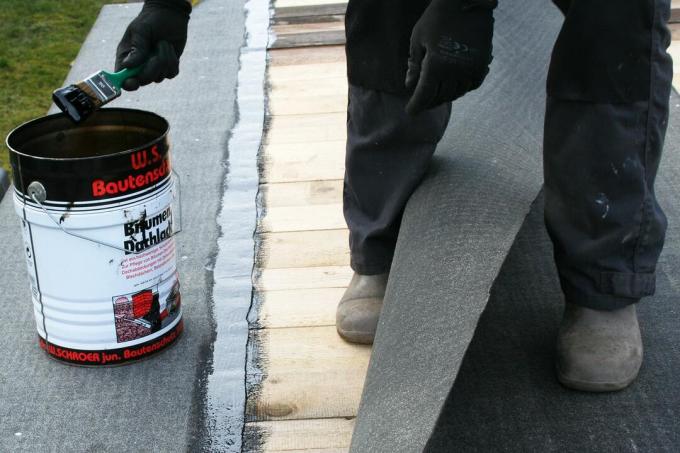
Bitumen stains: 6 removal tips
If you have to process bitumen, you should be careful. The black, viscous mass is sticky and adheres well to clothing, hands and all possible surfaces with which it comes into contact. With our tips you can successfully remove it.
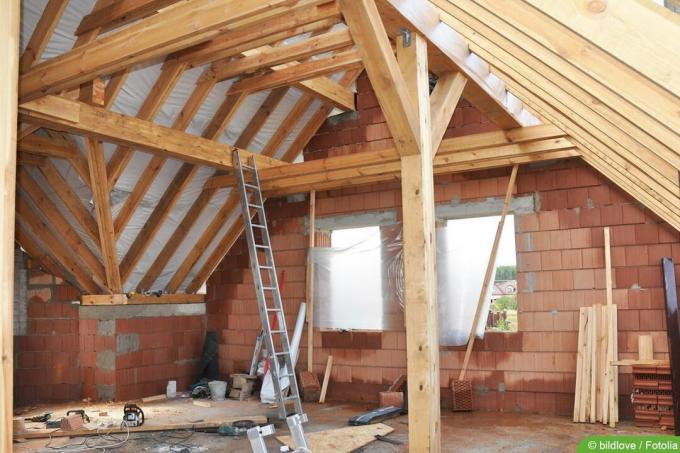
Attic: OSB or Rauspund as roof boarding?
Both OSB and Rauspund boards are suitable as roof boarding. But what are the differences and what is better suited for the attic? Our guide answers these and other questions about the two materials.

Laying a vapor barrier: how far does the vapor barrier have to go?
Laying a vapor barrier is essential in some cases. But how far does the vapor barrier have to be installed, what is it and what are the differences? These and more questions are answered in the following guide.

Decision-making aid: 11 garden shed roof coverings
When it comes to the roof covering for the garden house, there are differences in terms of material, costs and effort. Our guide shows what you should pay attention to and where the respective advantages and disadvantages lie. This gives you a decision-making aid for the garden house roof.

